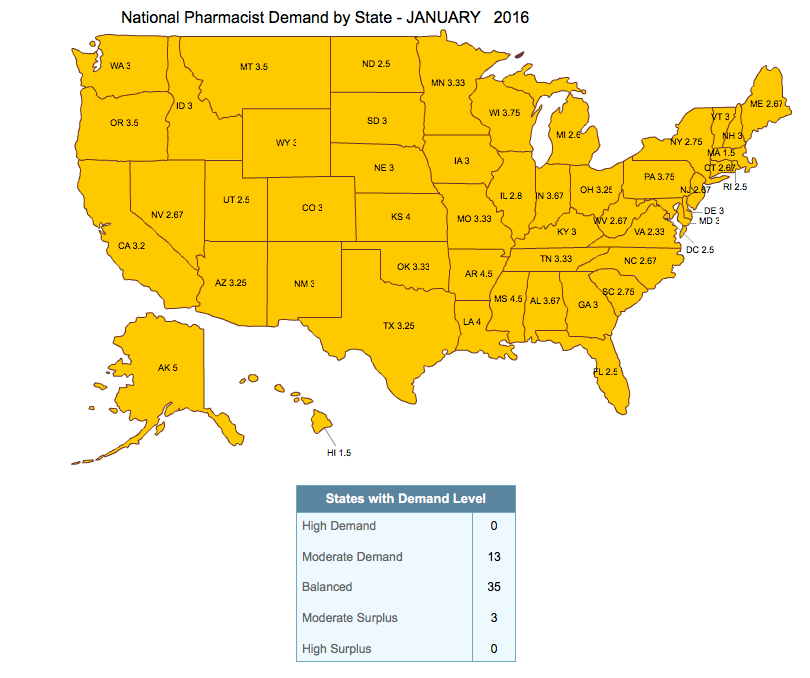Article
Pharmacist Job Indicator Shows Improvement
Author(s):
There was some degree of unmet demand for pharmacists nationally in January and December, which was a slight improvement from November, when the number of pharmacists looking for work seemed to exceed the number of pharmacist jobs available.
There was some degree of unmet demand for pharmacists nationally in January and December, which was a slight improvement from November, when the number of pharmacists looking for work seemed to exceed the number of pharmacist jobs available.
These findings stem from the Pharmacy Workforce Center’s (PWC) overall pharmacy Aggregated Demand Index (ADI), which was reported at 3.09 in December 2015 and 3.05 in January 2016, compared with 2.96 in November 2015.
For reference, an ADI of 3 would indicate that demand for pharmacists is in balance with supply. Meanwhile, an ADI above 3 would indicate that demand for pharmacists is higher than the available supply of open positions, while an ADI below 3 would indicate that demand for pharmacists is lower than the available supply.
Of note, the November 2015 data marked the first time in 10 years that the national ADI was reported below 3.

At the state level, Alaska (5) currently has the highest demand for pharmacists, followed by Arkansas and Mississippi (4.5), and Kansas and Louisiana (4). The states with the lowest demand for pharmacists are Massachusetts and Hawaii (1.5).
By comparison, the states with the highest demand for pharmacists in November 2015 were Alaska (4.75), Arkansas (4.20), and Louisiana (4.14), while those on the other end of the spectrum were Massachusetts (1.75), Hawaii and New York (2.0), and Connecticut, Iowa, New Jersey, North Dakota, and Virginia (2.33).

Regionally speaking, the South, Midwest, and West all have ADIs above 3, while the Northeast is seeing a slight oversupply of pharmacists, at an ADI of 2.81.
“In the New England and South Atlantic divisions, the average ratings reflect that demand decreased the most, and the West South Central also saw a slight decrease in demand,” PWC’s January 2016 report stated.
In her exclusive commentary about November’s ADI, Lucinda L. Maine, PhD, RPh, executive vice president and CEO of the American Association of Colleges of Pharmacy, explained that the monthly data are calculated by panelists “who primarily represent employers within the traditional pharmacy practice settings of chains and health systems.”
“What’s missing are all the other settings where pharmacists work, including physicians’ offices and clinics, where future demand may be quite substantial,” she noted.





